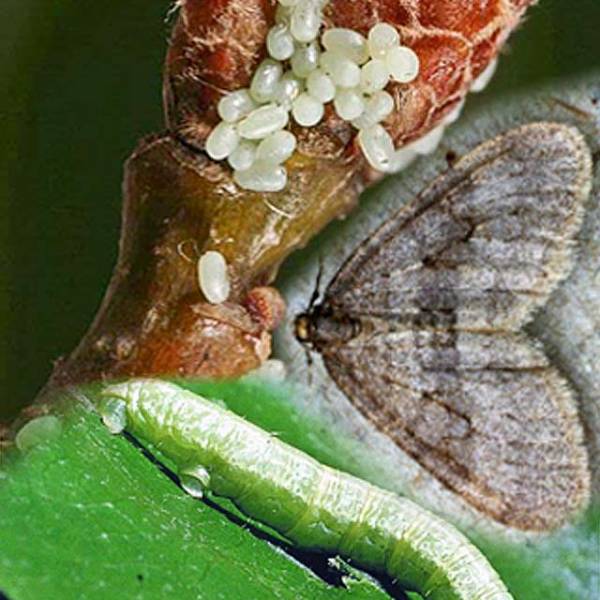By Dirk Coburn, Horticultural Specialist at Weston Nurseries
In southeastern New England we live increasingly with Winter Moth. Winter Moth adults collect in late fall to early winter especially around outdoor lights, laying eggs on tree trunks, house siding, and other outdoor surfaces in late November and December. Horticultural oils, such as Bonide’s All Seasons Oil can help prevent Winter Moth eggs from hatching if applied by the end of March.
When eggs hatch, usually some time in April, Winter Moth caterpillars feed on the leaves and buds of certain deciduous woody plants. Susceptible plants include maples, oaks, ash, elms, basswood, mountain ash, most fruit trees and shrubs, and flowering cherries. The green “inchworm” caterpillars start tiny – less than an eighth of an inch in length. They can even tunnel into buds and destroy them even before the buds open.
Water any defoliated tree or shrub deeply once a week through the summer. Even so, a plant defoliated three years in a row is at high risk of death. So susceptible plants should be monitored closely in April and treated at the first sign of Winter Moth caterpillars.
Bacillus Thuringiensis ‘kurstaki’ (BTk), a bacterium specific to caterpillars of butterflies and moths, is very effective on Winter Moth caterpillars up to a quarter inch in length. Weston Nurseries offers Bonide’s Thuricide®, a BTk-based product. BTk cultures in infected caterpillars and is more effective as they spread it.
Caterpillars over a quarter of an inch can be treated with a spinosad-based insecticide, such as Bonide’s Captain Jack’s Deadbug Brew. Spray after sunset to minimize contact with bees; toxicity to bees drops greatly after the product has dried. Do not spray any plants that attract bees when those plants are in flower.








